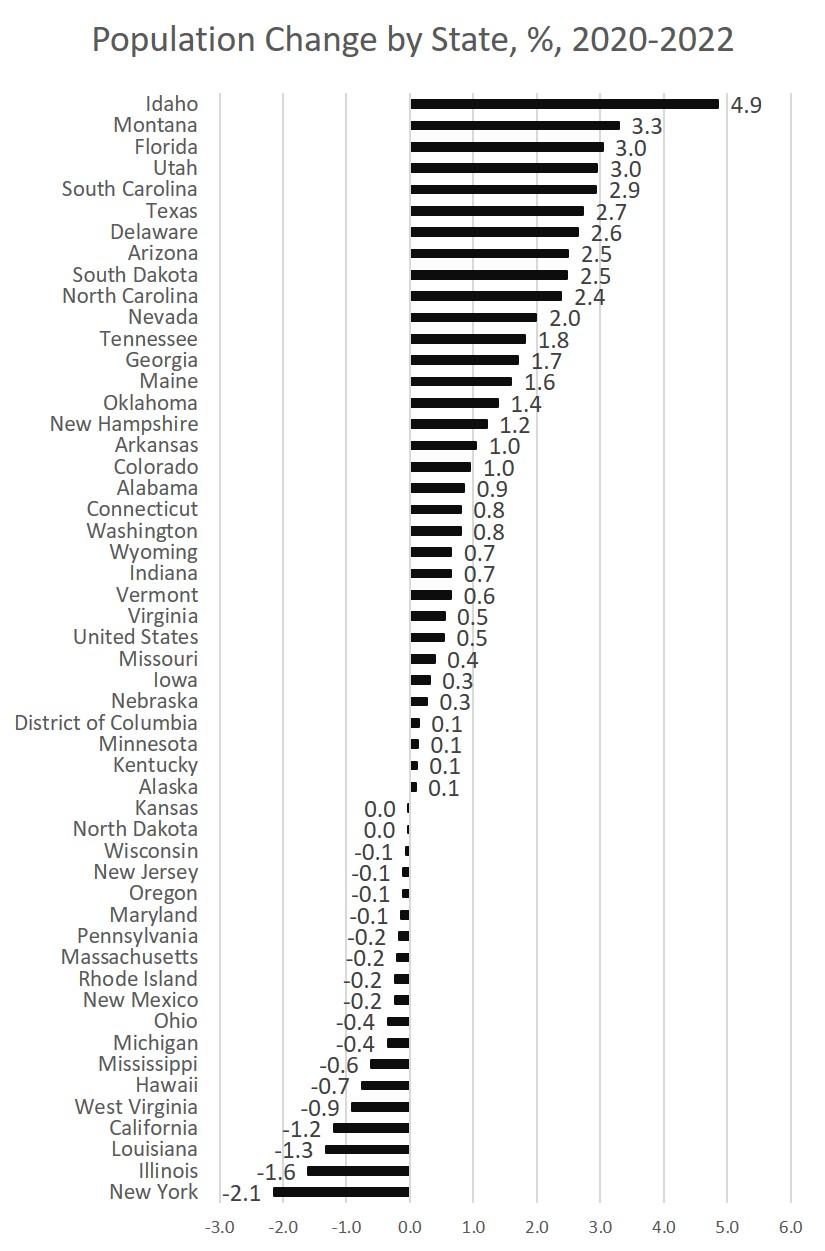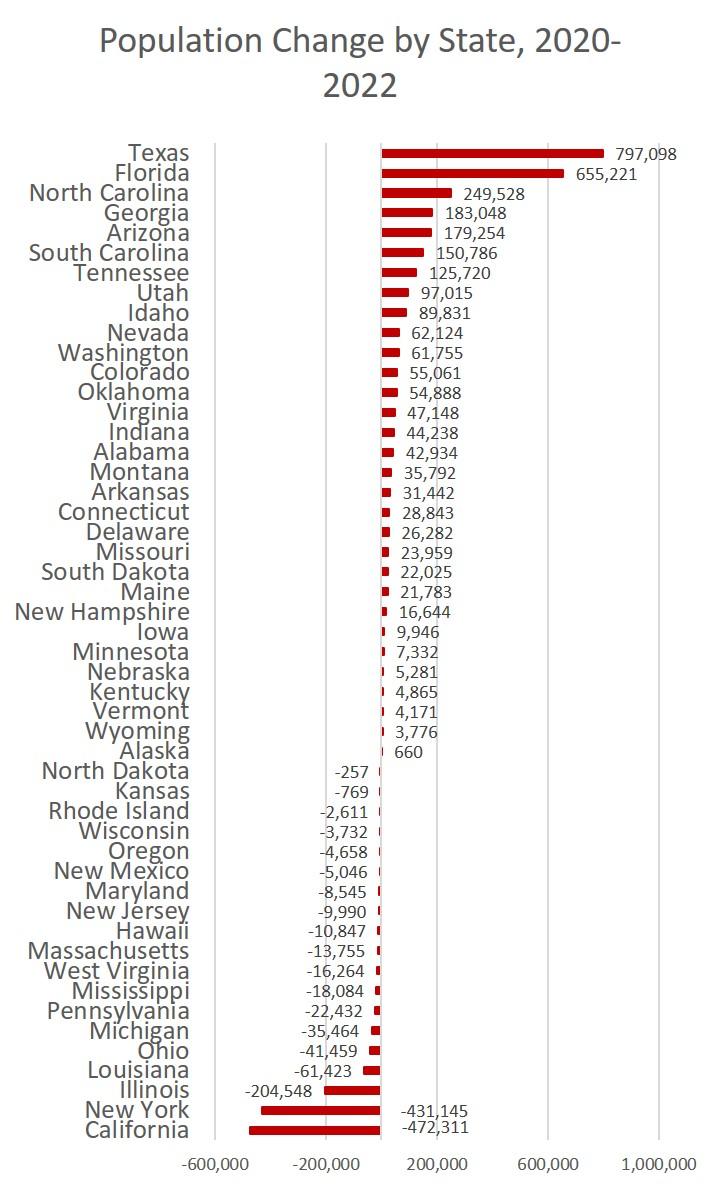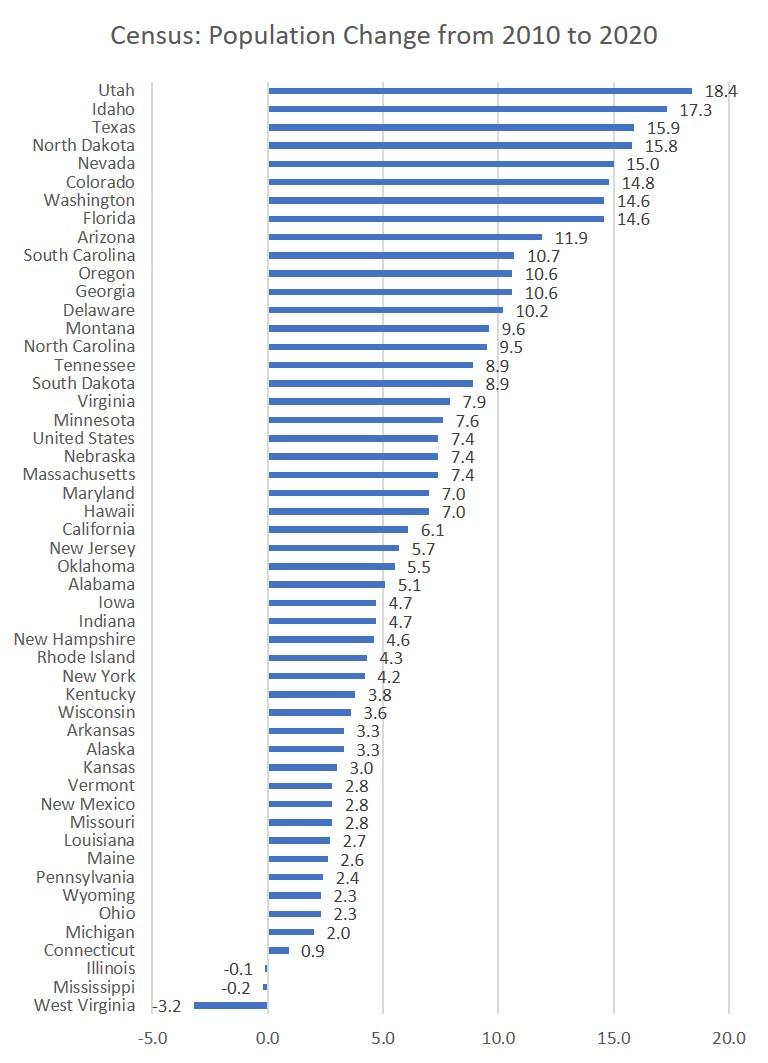Florida Governor Ron DeSantis has frequently bragged that Florida is in high demand among people looking to relocate. In a new report released this week from the Census Bureau, it seems that he's been correct. According to the Bureau's report: After decades of rapid population increase, Florida now is the nation’s fastest-growing state for the first time since 1957, according to the U.S. Census Bureau’s Vintage 2022 population estimates released today. Florida's population increased by 1.9% to 22,244,823 between 2021 and 2022, surpassing Idaho, the previous year’s fastest-growing state. In raw numbers, that amounts to an increase of about 416,000 people, which is the size of a medium-sized American city. This quickly leads to the question of why so many people
Topics:
Ryan McMaken considers the following as important: 6b) Mises.org, Featured, newsletter
This could be interesting, too:
Nachrichten Ticker - www.finanzen.ch writes Die Performance der Kryptowährungen in KW 9: Das hat sich bei Bitcoin, Ether & Co. getan
Nachrichten Ticker - www.finanzen.ch writes Wer verbirgt sich hinter der Ethereum-Technologie?
Martin Hartmann writes Eine Analyse nach den Lehren von Milton Friedman
Marc Chandler writes March 2025 Monthly
Florida Governor Ron DeSantis has frequently bragged that Florida is in high demand among people looking to relocate. In a new report released this week from the Census Bureau, it seems that he's been correct. According to the Bureau's report:
After decades of rapid population increase, Florida now is the nation’s fastest-growing state for the first time since 1957, according to the U.S. Census Bureau’s Vintage 2022 population estimates released today.
Florida's population increased by 1.9% to 22,244,823 between 2021 and 2022, surpassing Idaho, the previous year’s fastest-growing state.
In raw numbers, that amounts to an increase of about 416,000 people, which is the size of a medium-sized American city. This quickly leads to the question of why so many people are moving to Florida. Much of this narrative—at least among Florida boosters—has centered around the idea that Florida became a place to go to obtain freedom from lockdowns, mask mandates, business closures, and other covid-panic measures imposed by state governments.
Migration Since Covid Lockdowns in 2020
Events like migration are always complex events, of course, but when we look at the Census Bureau's new migration data on changes from 2020 to 2022, it sure looks like the data backs up the idea that a great many people are moving from restrictionist covid states to states where daily life is a little less regimented. It is likely that these trends also reflect larger trends in which Americans are moving from high-tax, highly regulated, expensive states to more affordable regions.
To get a better view of the post-covid trend, let's broaden our scope to population trends from 2020 to 2022. (The data reflects a July estimate for each year, so we're talking about changes from July 2020 to July 2022.)
In this case, we find that Florida is in the top three of states with big population changes since 2020. But it's behind both Montana and Idaho. Idaho's population has grown 4.9 percent since 2020, while Montana and Florida have growth of 3.3 percent and 3 percent, respectively. The story coming out of Idaho has been that a very large number of Californians relocated there during Covid lockdowns, and also as a means of escaping California's increasingly interventionist state. Florida, on the other hand, apparently tends to get migrants from the northeastern United States.
The Census data at least supports the thesis that people are indeed leaving both California and New York in large numbers. As far as taxes and covid policies go, Illinois could be lumped in with California and New York as well. Indeed, looking at population change since 2020, California, Illinois, and New York are all in the top five for falling population. Since 2020, New York has lost more than 2 percent of its population while California has lost 1.2 percent of its population. Illinois is the second worst, losing 1.6 percent of its population. (The bottom five is filled out by the low-income states of West Virginia and Louisiana.)
Source: Census Bureau, State Population and Components of Change, 2020-2022.
When we look at raw numbers, we find that Texas tops the list. In fact, both Florida and Texas added more than half-a-million people from 2020 to 2022. Texas added more than 700,000 and Florida added more than 600,000. For context, we could note that the city of Memphis has 630,000 people. Milwaukee has 575,000 people.
Meanwhile, during this period, both New York and California lost more than 400,000 people each. Illinois lost more than 204,000. No other states come even close in terms of total number of people who moved away.
Source: Census Bureau, State Population and Components of Change, 2020-2022.
In fact, eight of the top-ten states for population growth from 2020 to 2022 are arguably so-called "red states," with blue Delaware and purple Arizona filling out the top ten. The bottom ten are either blue states or red states with stagnant economies.
These numbers reflect longer-term trends away from high-tax, expensive, Democrat-controlled states toward the south and West. For example, from 2010 to 2020, eight of the top ten states for population growth were arguably "red states." Utah and Arizona topped the list with 18.4 percent growth and 17.3 percent growth, respectively. Meanwhile, California's growth rate was one-third that of Utah, at a rate of 6.1 percent. New York grew 4.2 percent during the period.
Source: Census Bureau, Historical Population Change Data.
Indeed, the relative growth rates seen here were reflected in the new Congressional apportionment process in which Texas and Florida both gained seats in Congress while New York and California both lost seats.
The "Experts" Say New York Is One of the "Best" States
Interestingly, these numbers repeatedly contradict what the "expert class" repeatedly tells us about how the "best" states in the Union are places like California, Massachusetts, and New York. For example, in September, Federal Reserve economists Elena Falcettoni and Vegard Nygaard published a new study purporting to provide an objective measure of "living standards across the United States" according to metrics like consumption, education, leisure, and inequality. The researches concluded that eight of the top ten "best" states were New England states, plus New York and New Jersey. North Dakota and South Dakota filled out the list. California and Illinois came in at 16th and 15th, respectively.
Many hundreds of thousands of American state-to-state migrants do not appear to have received this memo. Instead, of the top-ten "best states" in this list, North Dakota, New Jersey, Rhode Island, Massachusetts, and New York all lost population from 2020 to 2022. Meanwhile, the states that gained the most population during this period were all ranked within the bottom half of the "best" states according to Falcettoni and Nygaard.
Apparently, New York isn't quite as attractive to many Americans as Federal Reserve economists think it should be.
Tags: Featured,newsletter



